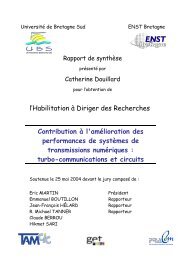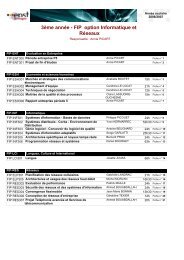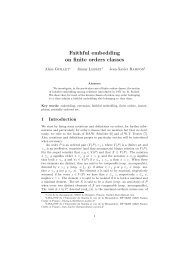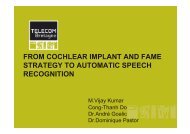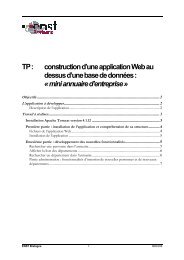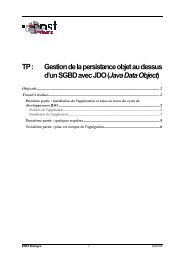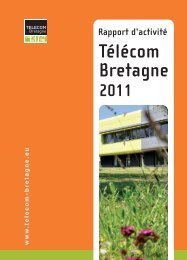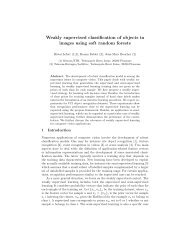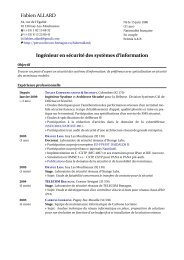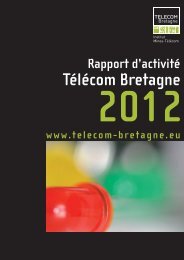researResearch - Télécom Bretagne
researResearch - Télécom Bretagne
researResearch - Télécom Bretagne
Create successful ePaper yourself
Turn your PDF publications into a flip-book with our unique Google optimized e-Paper software.
esearc<br />
<strong>researResearch</strong><br />
enables to federate research works in electronics,<br />
micro-waves, signal processing, digital<br />
communications and networks.<br />
Moreover, Télécom <strong>Bretagne</strong> teams (electronics,<br />
networks, signal processing, digital<br />
communications, optics, micro-waves, human<br />
sciences and ergonomics) come together along<br />
other topics like “Smart transport” (driving and<br />
traffic management assistance systems) through the<br />
projects of the research cluster Id4Car,<br />
collaborations with researchers of Inrets (Institut<br />
national de recherche dans les transports et la<br />
sécurité). Besides, Télécom <strong>Bretagne</strong> is member of<br />
the scientific group ITS <strong>Bretagne</strong> of which it chairs<br />
the steering committee. Last, in the area of<br />
technologies for health and ambient assisted living,<br />
research activities and collaborations between<br />
various teams (Image processing, computer science,<br />
human sciences) and healthcare professionals are<br />
growing. More recently, a specific action on ICT and<br />
Energy Efficiency has been launched and should lead<br />
to the creation of a new team on this transversal<br />
topic.<br />
3.4 Memorable scientific results and publications<br />
Among the memorable scientific results of Télécom<br />
<strong>Bretagne</strong> researchers, the development of a new<br />
diversity modulation technique by a team of the<br />
Electronics department and of the LabSTICC has to<br />
be outlined. This technique is based on the principle<br />
of constellation rotation and I/Q interleaving in a<br />
context of coded modulation for data transmission<br />
on very disturbed and fading channels. It brings<br />
significant gains in performance for digital broadcast<br />
for isochronous emitter networks and has been<br />
adopted by the DVB-T2 terrestrial digital broadcast<br />
standard. In addition, along with Breton Teamcast<br />
and Spanish Sidsa SMEs, a project called SME42<br />
aiming at validating this new standard has been<br />
proposed and ranked #1 among the 300 projects<br />
reviewed in June 2008.<br />
2008 has witnessed an increase of 20% of the<br />
Télécom <strong>Bretagne</strong> papers published in scientific<br />
journals (See Table 2 for the distribution of<br />
publications). It is Télécom <strong>Bretagne</strong> policy to<br />
encourage publication and dissemination of<br />
research results. To this end, we participate in the<br />
Institut Télécom group working on the portal to<br />
access the HAL open archive. A similar approach is<br />
followed in parallel among UEB.<br />
Publication type<br />
2006<br />
2007<br />
2008<br />
Papers in journals with peer review<br />
Books or chapters in a book<br />
Papers in conferences involving a review committee<br />
Doctoral theses<br />
HDR (« Habilitations à Diriger des Recherches ») theses<br />
Total<br />
62<br />
22<br />
215<br />
42<br />
2<br />
343<br />
59<br />
17<br />
193<br />
42<br />
4<br />
315<br />
99<br />
13<br />
261<br />
35<br />
3<br />
411<br />
8<br />
Table 2 : Publication results from 2006 to 2008



